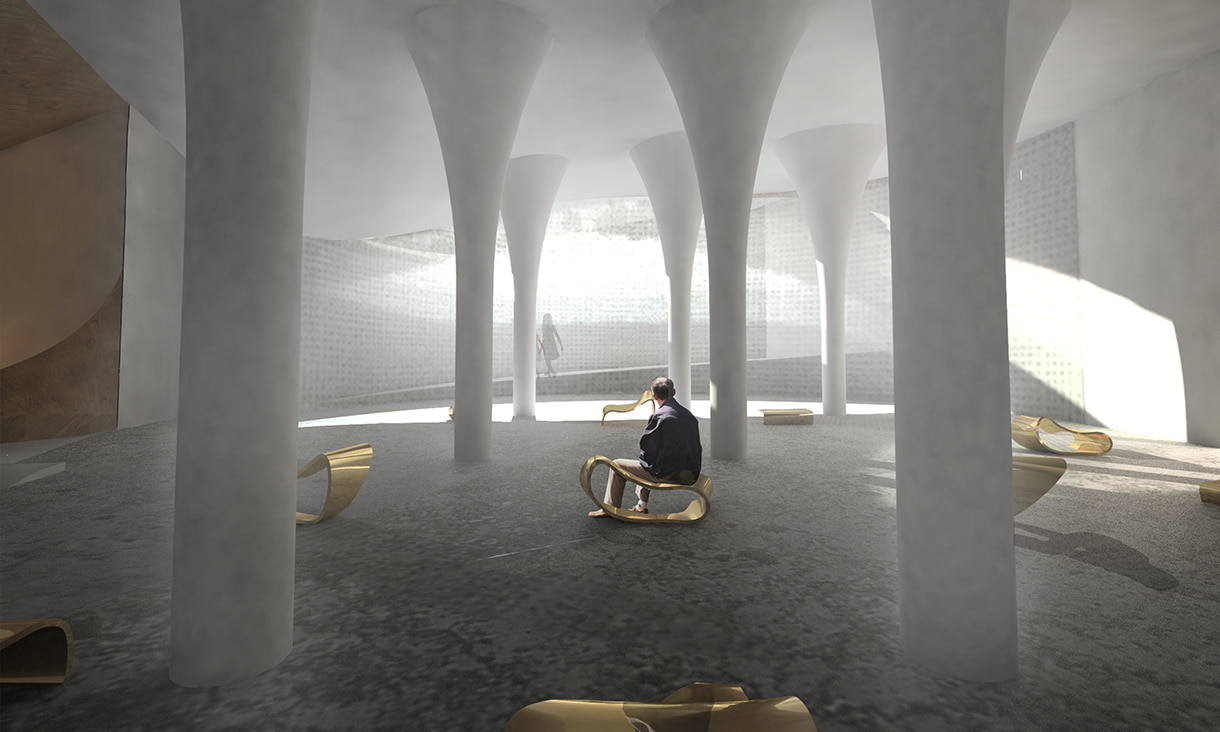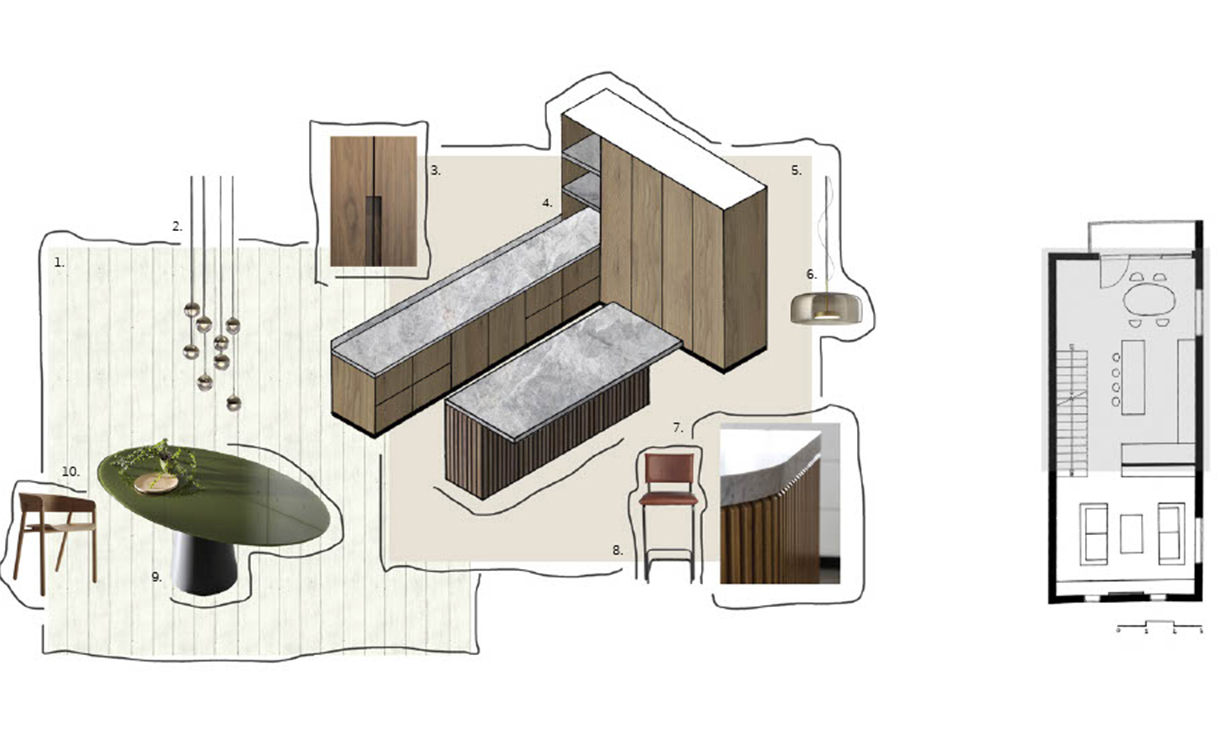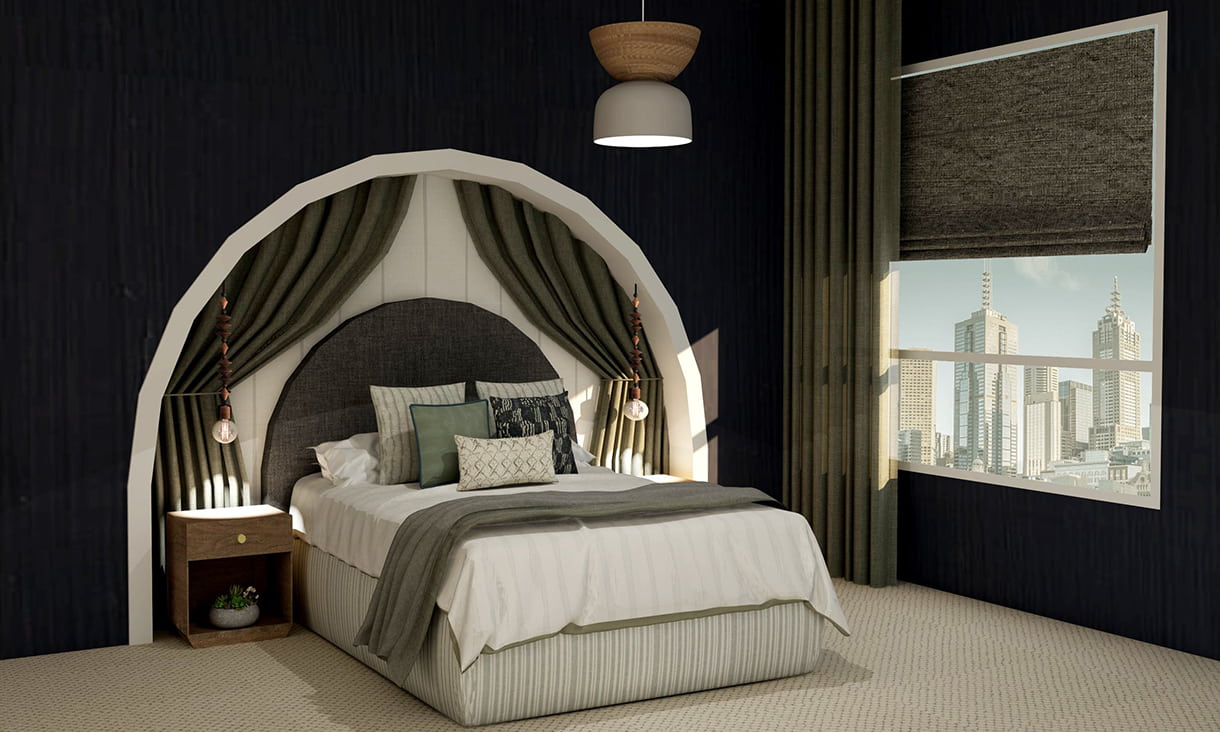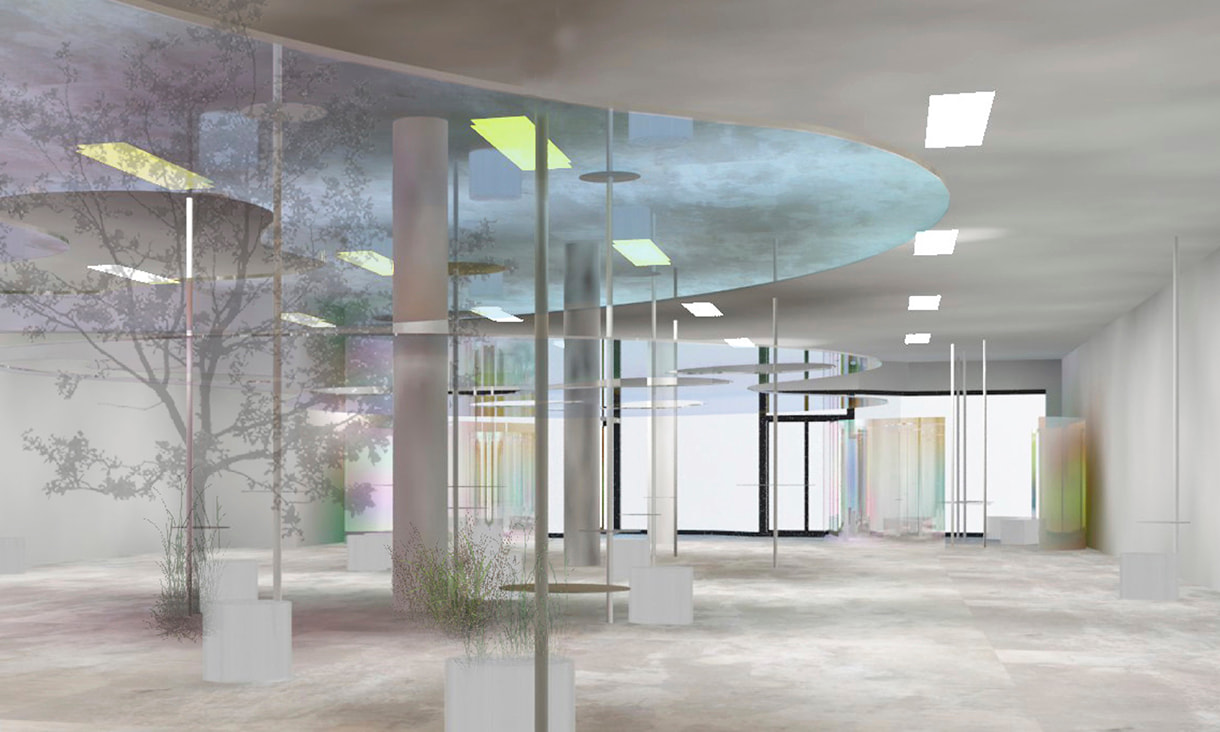We asked Suzie Attiwill, Associate Dean of Interior Design, to answer your top questions about studying interior design at RMIT.
What is interior design? At RMIT, we see it as a critical 21st century practice that addresses the relation between people and their environments – how we live, work and play.
Interior design contributes to and transforms social, cultural, technological and environmental conditions, and the term includes interior architecture, spatial design and interior decoration.
RMIT is known for an expanded approach to interior design and we offer the oldest and longest-running program in Australia. We recently celebrated 80 years of interior design since 1939.
We now offer courses across all levels of study: Vocational Education (VE), Undergraduate, Postgraduate and Higher Degree by Research. So which level is right for you?
 Major research project by Xiaowei Liu, student of the Bachelor of Interior Design (Honours).
Major research project by Xiaowei Liu, student of the Bachelor of Interior Design (Honours).
1. What are the main differences between RMIT’s interior design courses?
At a Vocational Education level, the Certificate IV in Interior Decoration and the Diploma of Interior Design focus on residential design and the development of high-level documentation and technical skills. Students in the Associate Degree of Interior Decoration and Design learn through applied development of skills and project-focused content addressing the inside of existing buildings.
The Bachelor of Interior Design (Honours) has an emphasis on idea-led design where design is engaged as 'an agent of change’. Students experiment through project-based learning in the design of new conditions of ‘interior’ and are able to map their own pathway through the 4 years, which culminates in a self-driven final year project.
The Master of Interior Design is an opportunity for students to refine their thinking and approach, to establish a focus for future work with an emphasis on commercial interior design practice in the Australasia/Asia Pacific region.
2. What industry projects are on offer to interior design students?
Students of all levels of interior design explore and challenge industry practice through critical design experimentation, and receive opportunities to work with industry mentors and partners on interior decoration and interior design projects.
A mentor program is available to second year students in the Diploma of Interior Design, where around 40 industry partners offer 10-week placements for students. In a recent industry project, students went on a study tour to Paris on the topic of adaptive re-use, in partnership with the Fashion Institute of Technology New York and local French architects and councils.
Industry projects in the Bachelor of Interior Design (Honours) include internships both local and international as well as industry-partnered design studios working on projects for clients such as Abacus Learning Centre, Veterans Affairs, Westfield, ACMI, State Library of Victoria, Denfair, Dark MOFO festival, Reece Bathrooms and the not-for-profit organisation 300 Blankets.
3. How do career outcomes for interior design vary across each level of study?
At the Certificate IV level, students are introduced to all aspects of Interior Decoration, developing creative, business and technical skills, and from here they're able to enter the decoration industry or pathway into the Diploma to continue their studies.
Diploma of Interior Design graduate destinations include residential design and decoration studios, colour consultants, commercial suppliers of materials and finishes, and decoration and design consultancies.
Graduates from the Associate Degree of Interior Decoration and Design enter the industry with high-level documentation and technical skills that can be applied to both residential and commercial projects, going on to become Interior Design assistants in design and architectural offices.
From the Bachelor of Interior Design (Honours), students apply their learning to a diverse range of interior design practices, from workplace, retail, hospitality and residential design, to event design and film production.
Students with a Master of Interior Design are able to add value to commercial interior design in Australasia and beyond. The Masters has a strong focus on collaboration, communication and engagement. In partnered design studios, students build relationships and networks with key people and organisations.
4. What are the key technologies shaping the world of interior design?
Developments in craft technologies and digital technologies are changing the field of interior design, from the detailed understanding of materials and techniques of decoration, to creating immersive virtual environments.
At RMIT, design and technology are brought together through practical learning. Skills in using essential software are learnt through applied studio projects and students build vital experience using emerging technology applications and practices.
In VE students learn BIM (Building Information Modelling) and foundation skills in Adobe creative suite programs, Sketch Up, Autocad and REVIT. The Bachelor of Interior Design (Honours) teaches software such as REVIT, Grasshopper, Rhino and XR (extended reality: includes AR, VR and immersive environments). The Master of Interior Design integrates this array of software into teaching as well as introducing specific software such as UNITY game design, in anticipation of these influences and advancements in industry.
 Decoration Practice project by Ella Rae, student of the Associate Degree Interior Decoration and Design.
Decoration Practice project by Ella Rae, student of the Associate Degree Interior Decoration and Design.
 Design Studio project by Sarah Treleaven, student of the Diploma of Interior Design.
Design Studio project by Sarah Treleaven, student of the Diploma of Interior Design.
5. What interior design skills are in demand?
The interior design industry covers a wide range of design practitioners and firms, from firms dedicated to interior decoration, to large commercial design firms with offices in major cities around the world. The Interior Design courses at RMIT reflect this diversity and offer courses that provide students with the relevant skills required.
Skills in demand include an understanding of technologies such as lighting and construction, sophisticated visual communication skills and essential soft skills like critical and conceptual thinking, contextual analysis, developing briefs and social/relational literacy. Skills are developed through a student-centred, open and exploratory approach to design learning. Courses focus on building digital literacy so that graduates can continue learning as practitioners and be able to adopt new technologies as they emerge.
6. What are RMIT’s interior design studios and facilities like?
Bachelor, Masters and PhD students are based in the Design Hub – a dedicated design building that is open 24/7 to students and staff for all teaching and self-directed study. Workshops provide access to a full range of analogue and digital fabrication tools, including laser cutters, 3D printers and robotic equipment. The Design Hub Gallery exhibits leading practitioners from around the world.
VE students learn in a studio classroom designed to replicate the workplace of the design office. Students have access to a large range of contemporary software, AV equipment, printers and scanners. A materials library is available for project work and gives students experience with using the tools of an Interior Designer.
 Design Studio 3 with Bates Smart project by Jin Song, Master of Interior Design.
Design Studio 3 with Bates Smart project by Jin Song, Master of Interior Design.
7. How would the Master of Interior Design help my practice and career?
This is the only dedicated Master of Interior Design in Australia. In commercial practice, Interior Designers work together with Architects and other professionals. A Masters degree enables them to have the same level of qualification and recognition.
Students entering the Master have already completed a Bachelor degree in a cognate discipline and are looking to hone their skills and become more competitive for employment. With a diverse international and domestic cohort of students, the degree fosters a community of practice where students work collaboratively on cutting edge partnered projects and connect with a global network of alumni.
Story: Hilary Jones


